If you’ve ever struggled to find the right journalists to pitch your story to, you’re not alone. With media lists constantly changing, outreach often feels like chasing shadows. That’s why journalist database tools are essential for PR agencies, startups, and brands that need consistent media coverage.
We researched dozens of platforms and narrowed down the 20 best journalist database tools for 2025. Whether you’re a freelancer pitching stories, a PR manager at an agency, or an eCommerce founder looking for press mentions, these tools save time, improve targeting, and increase media placement success.
According to Muck Rack’s 2024 State of PR Report, 60% of PR professionals say building relationships with journalists is their biggest challenge, while Cision’s 2024 Global Comms Report highlights that 72% of journalists prefer targeted pitches over mass outreach. These stats prove why having access to the right journalist database is no longer optional—it’s vital.
A journalist database tool is software that helps PR professionals, marketers, and business owners identify, organize, and contact relevant journalists. Instead of guessing who to pitch, you can filter by beat, publication, location, or past articles.
The main benefits include:
For brands looking to grow visibility, a journalist database tool becomes a cornerstone of media outreach and digital PR strategy.
When choosing the right journalist database, buyers care about pricing, accuracy, support, and ease of use. That’s why this table highlights the most critical decision factors:
| Tool Name | Best For | Starting Price | Free Trial? | Unique Feature | Rating |
| Muck Rack | PR agencies | Custom quote | Yes | Live journalist profiles | 4.7 |
| Cision | Enterprises | Custom quote | No | Largest global database | 4.3 |
| Propel PRM | Startups | $49/mo | Yes | AI-powered pitch scoring | 4.6 |
| Prowly | SMEs | $119/mo | Yes | Media newsroom builder | 4.5 |
| Roxhill | UK-based PR | £125/mo | Yes | UK journalist focus | 4.2 |
| PressRush | Freelancers | $99/mo | Yes | Easy-to-use media lists | 4.1 |
| JustReachOut | Entrepreneurs | $99/mo | Yes | Direct journalist outreach | 4.4 |
| Anewstip | Niche industries | $200/mo | Yes | Search by tweets/articles | 4.3 |
| Media Contacts | Corporate PR | Custom quote | No | Verified journalist data | 4.0 |
| Agility PR | Global teams | Custom quote | Yes | Multi-language support | 4.1 |
| NinjaOutreach | Bloggers/Influencers | $389/mo | Yes | Influencer + journalist database | 4.2 |
| Qwoted | Thought leaders | Free–Pro plans | Yes | Journalist–expert matchmaking | 4.5 |
| Meltwater | Large brands | Custom quote | No | Media monitoring + outreach | 4.3 |
| BuzzStream | SEO & PR teams | $24/mo | Yes | Outreach automation | 4.6 |
| HARO (Help A Reporter Out) | Founders | Free–Pro plans | Yes | Journalist request matching | 4.4 |
| Proweb | EU companies | Custom quote | Yes | Strong EU coverage | 4.0 |
| Pressfarm | Startups | $90/mo | Yes | Startup-focused PR lists | 4.2 |
| JournoLink | SMEs in UK | £39/mo | Yes | Affordable PR coverage | 4.1 |
| PRmax | Agencies | Custom quote | Yes | Campaign analytics | 4.0 |
| MediaContacts.co | Freelancers | $49/mo | Yes | Affordable media lists | 4.0 |
Now, let’s break down each of the 20 best journalist database tools.
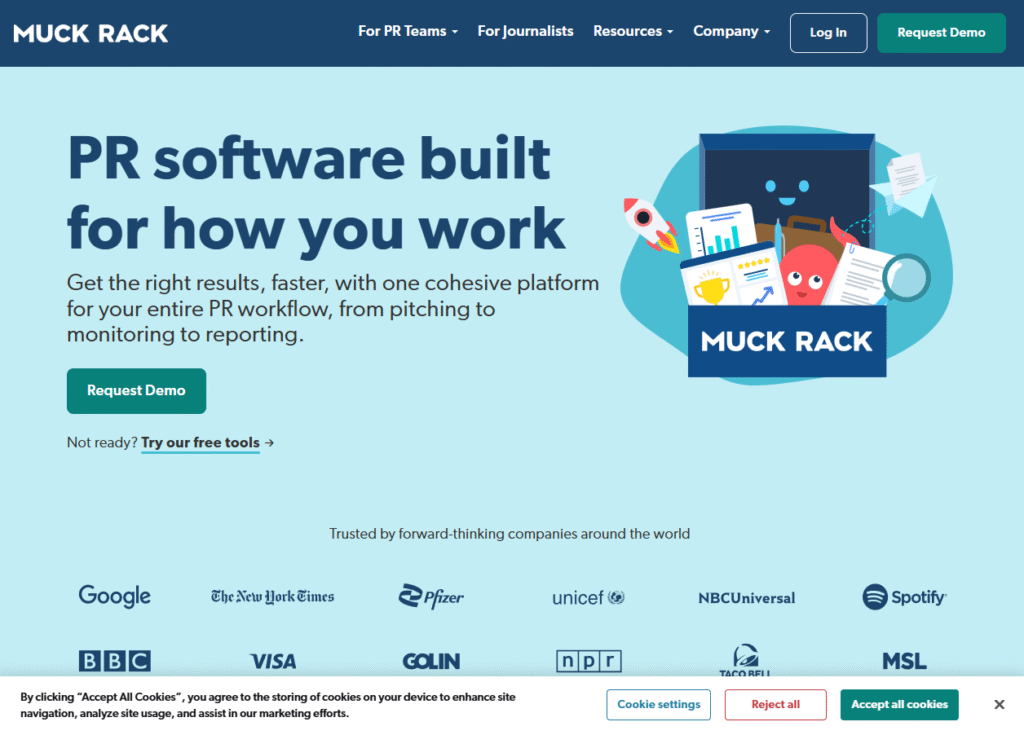
Muck Rack is one of the most recognized journalist database tools in 2025, trusted by PR agencies, enterprises, and non-profits worldwide. It provides live journalist profiles, media monitoring, and outreach tools that make it easier to build relationships with reporters who actually cover your niche. With clients like Google, Pfizer, and Microsoft, Muck Rack has become a go-to solution for serious PR professionals.
Muck Rack constantly updates journalist profiles with their latest articles, social media activity, and beats. This ensures your outreach is relevant and not based on outdated lists. If you’re pitching a story, you’ll know exactly what topics a journalist has been covering.
Track brand mentions across news sites, blogs, and social platforms. Muck Rack helps you understand how your brand or competitors are being covered, making it easier to identify new media opportunities.
See when your email pitch is opened and whether links are clicked. This feature gives you valuable feedback so you can refine your PR outreach and improve response rates.
PR agencies and corporate teams can manage campaigns together, assign tasks, and avoid duplicate outreach. Everything is centralized in one platform for efficiency.
Build segmented journalist lists based on topics, location, or publication. Instead of sending generic emails, you can personalize pitches to highly targeted groups.
| Pros | Cons |
| Accurate, real-time journalist data | No transparent public pricing |
| Strong analytics and monitoring | Can be expensive for small teams |
| Trusted by top enterprises | Steeper learning curve for beginners |
Muck Rack pricing is available via custom quotes. While it is on the higher end, its extensive database and premium features justify the cost for agencies and large teams.
Use Muck Rack’s journalist alerts to get notified when a reporter covers a topic related to your industry. This makes your pitch more timely and relevant.
Instead of sending cold pitches, track journalist activity first. For instance, if a journalist just published an article on sustainability, you can respond with a pitch that extends their story angle. This personalized approach increases your chance of getting covered.
Cision is the closest competitor to Muck Rack. While Muck Rack excels in real-time journalist profiles, Cision offers the largest database globally, which makes it stronger for enterprises with international media needs.
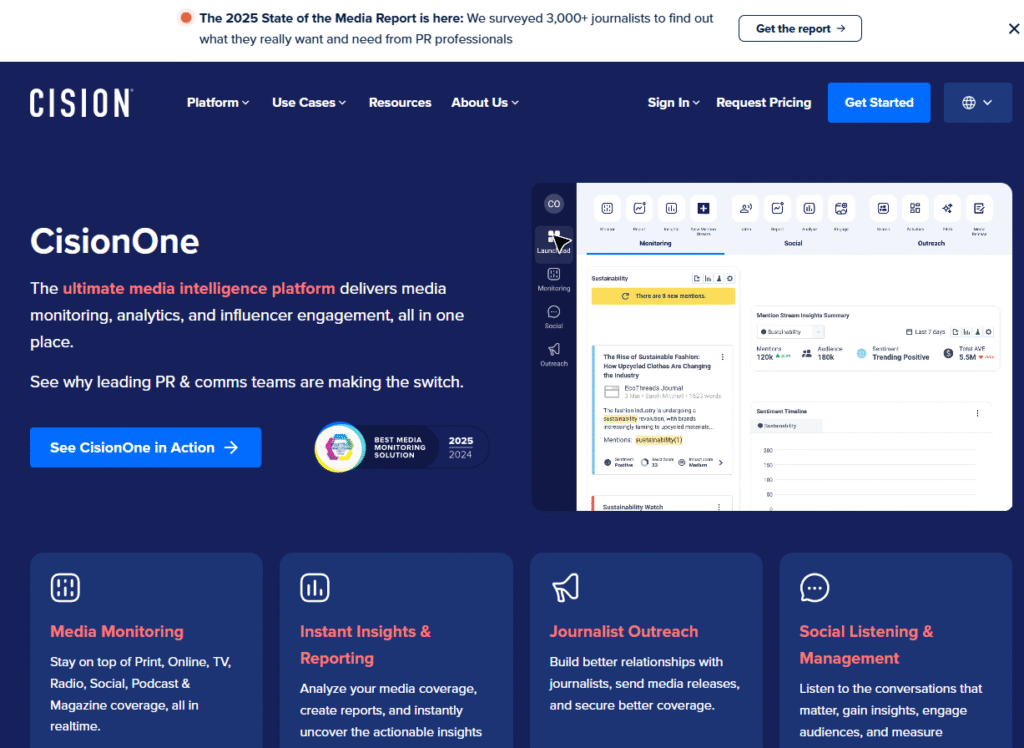
Cision is one of the most established journalist database tools in the world, offering unmatched global media reach. With the largest journalist and media outlet database available, it’s designed for enterprises and PR teams that need to run campaigns across multiple regions. Cision is widely used by Fortune 500 companies, government agencies, and international NGOs.
Cision provides access to hundreds of thousands of verified journalist contacts across multiple industries and regions. If you’re running campaigns across North America, Europe, and Asia, this scale is invaluable.
Beyond journalist outreach, Cision allows you to distribute press releases directly to global news wires. This ensures your announcements reach both journalists and media outlets instantly.
Track brand mentions across online news, broadcast, print, and even podcasts. Cision’s monitoring system covers more channels than most competitors, making it ideal for enterprises with broad media exposure.
Cision includes analytics dashboards that measure the impact of PR campaigns. You can see reach, engagement, and sentiment data to prove ROI to executives.
Like a PR CRM, Cision helps teams manage journalist interactions, log outreach history, and coordinate communications across large departments.
| Pros | Cons |
| Largest journalist database globally | No free trial available |
| Strong media monitoring tools | Custom pricing only, often costly |
| Trusted by enterprises and agencies | Can feel overwhelming for small teams |
Cision operates on custom quotes, usually customised to enterprise needs. Pricing tends to be higher than average, but the scale of its database and distribution capabilities makes it worth it for global teams.
Use Cision’s media monitoring alongside its journalist database. By tracking which outlets are writing about your competitors, you can quickly identify journalists likely to cover your brand too.
If you’re planning a product launch in multiple countries, you can use Cision’s database to build segmented journalist lists per region and send localized press releases. This ensures your outreach is culturally relevant and improves pick-up rates.
Muck Rack is a strong alternative if you don’t need the global scale of Cision. While Cision excels in international coverage, Muck Rack offers fresher, real-time journalist profiles, making it ideal for agencies focused on accuracy over volume.
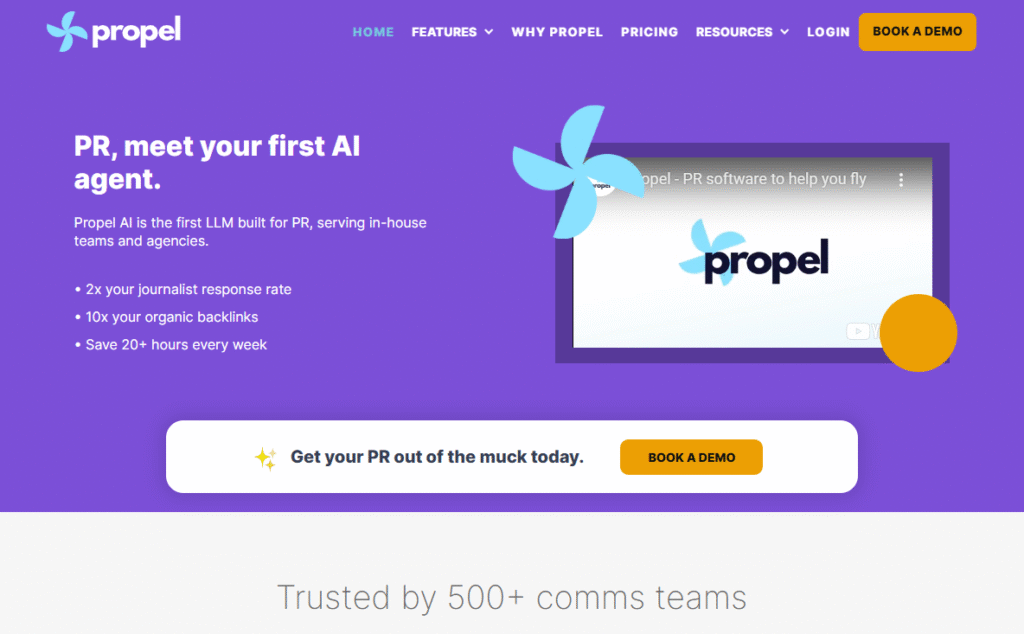
Propel PRM is one of the newer journalist database tools making waves with its AI-driven approach. It’s built for startups, small teams, and PR agencies that want data-backed insights on how their pitches perform. Propel stands out by combining media outreach with AI scoring, which predicts how likely a journalist is to engage with your pitch.
Propel analyzes your outreach and scores it based on likelihood of success. This helps you refine subject lines, timing, and content so your emails resonate with journalists instead of landing in spam folders.
Instead of switching platforms, Propel integrates directly with your inbox. This means your entire PR workflow—from building lists to sending and tracking emails—happens where you already work.
Get detailed analytics on open rates, response rates, and journalist engagement. Propel makes it clear which pitches are performing well and which need tweaking.
Propel provides a comprehensive journalist database, including contact details, past coverage, and outlet information, so you can build targeted lists.
Agencies and teams can manage campaigns together, track journalist conversations, and share notes, reducing duplicated outreach.
| Pros | Cons |
| AI-powered pitch scoring | Smaller database than Cision |
| Affordable plans for small teams | Not ideal for very large enterprises |
| Easy Gmail/Outlook integration | Some features require training |
| Strong analytics for ROI tracking | Newer tool, fewer case studies |
Propel PRM starts at $49/month, making it one of the more affordable journalist database tools. Pricing scales with features and team size, but it remains competitive for startups and small agencies.
Use Propel’s AI pitch scoring before hitting send. The system will highlight weak subject lines and suggest improvements that increase open rates dramatically.
Start by uploading your current media list into Propel. The AI will analyze your past outreach results and recommend the best time to pitch certain journalists, helping you maximize visibility.
Prowly is a great alternative if you want newsroom-building capabilities along with outreach. Propel excels at pitch optimization, while Prowly shines in media relationship management with branded press rooms.
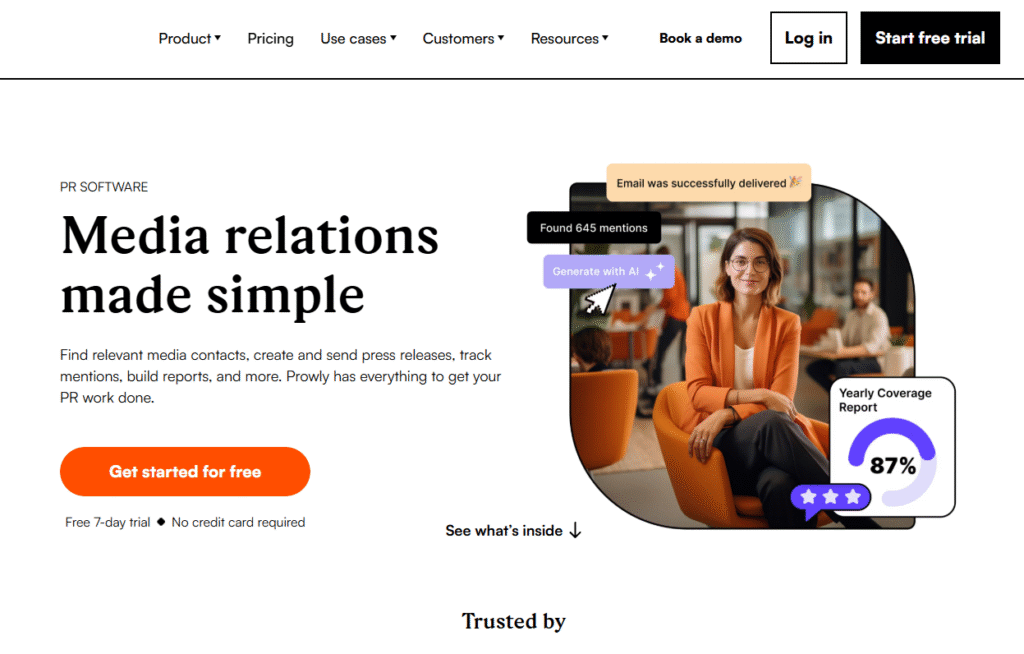
Prowly is a versatile journalist database tool built for small to medium-sized businesses, agencies, and startups that want both outreach and branded newsroom capabilities. It combines journalist contact management with storytelling features, making it easy to pitch and publish content in one place.
Prowly’s database covers over one million journalists and outlets worldwide. You can search by beat, location, and past coverage to build precise outreach lists.
Unlike most journalist database tools, Prowly allows you to create a branded media room where journalists can access your press releases, visuals, and company updates anytime.
Prowly makes it easy to send targeted email pitches directly to segmented journalist lists, with templates and personalization features to improve responses.
Track journalist engagement with your press releases and emails. See who opened, clicked, or downloaded materials, so you can follow up with warm leads.
Prowly integrates with platforms like HubSpot and Salesforce, making it easier to align PR with broader marketing and sales efforts.
| Pros | Cons |
| Branded newsroom creation | Smaller database than Cision |
| Easy-to-use pitch builder | Limited advanced AI features |
| Affordable for SMEs | May lack enterprise-level monitoring |
| Strong integrations with CRMs | No built-in global wire distribution |
Prowly starts at $119/month, with pricing scaling based on database access and features. A free trial is available, making it easy to test before committing.
Use the newsroom feature to host multimedia press kits. Journalists prefer having logos, images, and bios in one link instead of multiple attachments in email pitches.
Instead of just sending out cold pitches, publish your press releases in your newsroom and share the link with journalists. This improves credibility and makes it easier for them to cover your story.
Propel PRM is the closest alternative if you care more about AI scoring for pitches. Prowly shines with branded newsroom features, while Propel is stronger in email optimization and analytics.
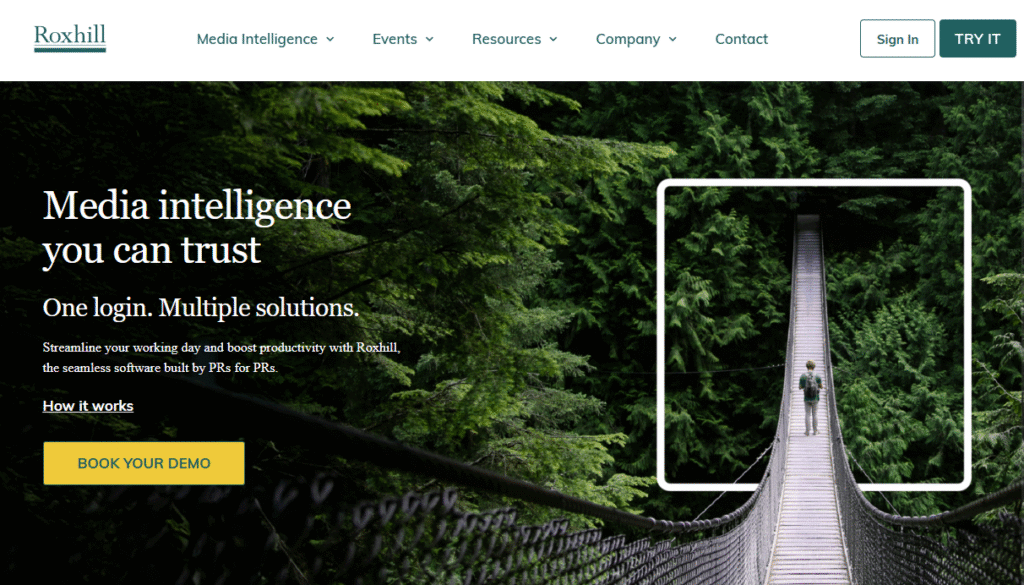
Roxhill is a premium journalist database tool designed specifically for PR professionals working in the UK market. Known for its accuracy and depth, Roxhill offers detailed journalist profiles, editorial calendars, and daily media updates. It’s widely used by agencies and in-house teams that need precise, localized media intelligence.
Roxhill specializes in UK-based journalists and outlets, making it one of the most accurate platforms for PR teams targeting the British media.
Stay ahead of publishing schedules with access to editorial calendars from major UK publications. This helps PR teams pitch at the right time for maximum coverage.
Roxhill sends real-time updates about journalist moves, new beats, and staff changes, ensuring your media lists never go stale.
Users can build segmented journalist lists based on topics, industries, or outlets, helping customise outreach to specific campaigns.
Search journalists by job title, publication type, or coverage area. The filters are more refined than generic global tools, which makes targeting sharper.
| Pros | Cons |
| Highly accurate UK journalist data | Limited international coverage |
| Real-time updates on journalist moves | Higher cost compared to smaller tools |
| Editorial calendars for timing pitches | Less useful for non-UK campaigns |
Roxhill pricing starts at around £125/month, with custom pricing for agencies requiring broader access.
Use Roxhill’s editorial calendars to time your pitches with seasonal or themed issues. Publications often lock stories months in advance, so pitching early gives you an edge.
If you’re running a UK product launch, Roxhill can help you identify which journalists at The Guardian, BBC, or Financial Times are covering your industry and when they’re planning related stories.
PressRush is a good alternative for freelancers or small businesses who don’t need such a UK-specific database. Roxhill is best if you’re operating in the UK exclusively, while PressRush works better for broader international outreach.
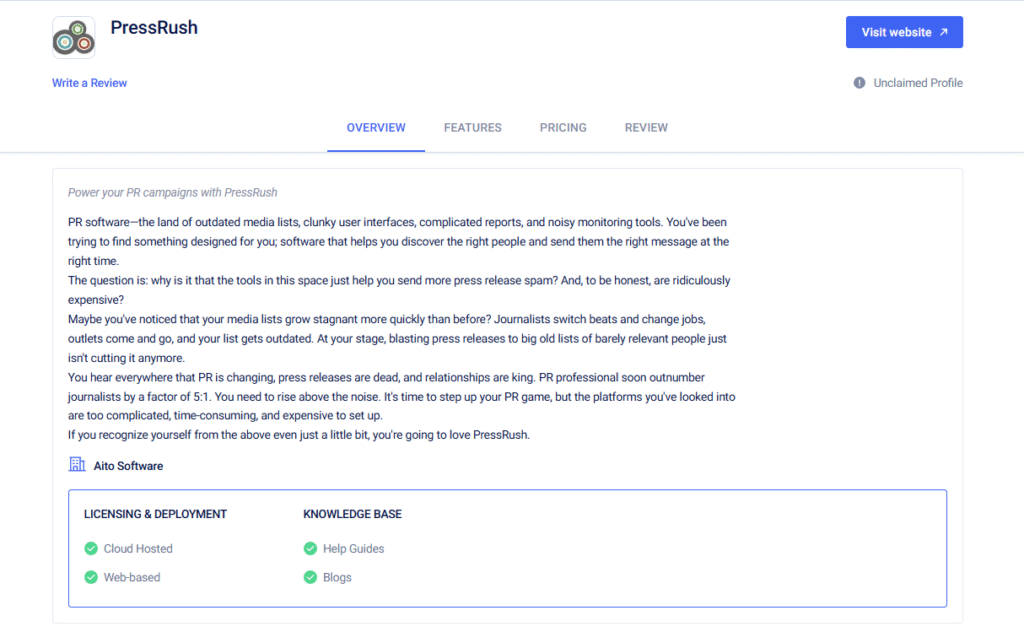
PressRush is one of the most straightforward journalist database tools for freelancers, startups, and small PR teams that don’t need enterprise-level complexity. Its main strength is helping users quickly build clean, targeted media lists without being overwhelmed by extra features.
PressRush makes it easy to search for journalists and outlets, then organize them into campaigns. Its simple interface is ideal for users who don’t want a steep learning curve.
The database is regularly refreshed, reducing the risk of sending pitches to outdated emails—a common frustration with static media lists.
Monitor whether your emails were opened or ignored. This provides useful feedback to improve outreach strategies over time.
Set alerts to track when journalists publish new articles. This ensures you pitch timely and relevant story angles.
PressRush is designed with freelancers and smaller PR departments in mind, offering transparent pricing and flexibility.
| Pros | Cons |
| Easy-to-use platform | Smaller database than Muck Rack or Cision |
| Affordable for freelancers | Limited advanced analytics |
| Regularly updated journalist data | No branded newsroom option |
| Pitch tracking available | Not built for large agencies |
PressRush starts at $99/month and includes a free trial, making it accessible for individuals and small PR teams.
Use PressRush alerts to track when a journalist covers your niche. Sending a follow-up pitch within 24 hours of a relevant article dramatically increases your chances of getting noticed.
Start by identifying 20–30 journalists who consistently write about your industry. Build a list inside PressRush and set alerts for their new content. Then customise pitches to directly reference their recent work.
JustReachOut is a good alternative if you prefer a tool that emphasizes direct journalist engagement and DIY PR coaching. PressRush is simpler and budget-friendly, while JustReachOut focuses more on teaching entrepreneurs to pitch effectively.
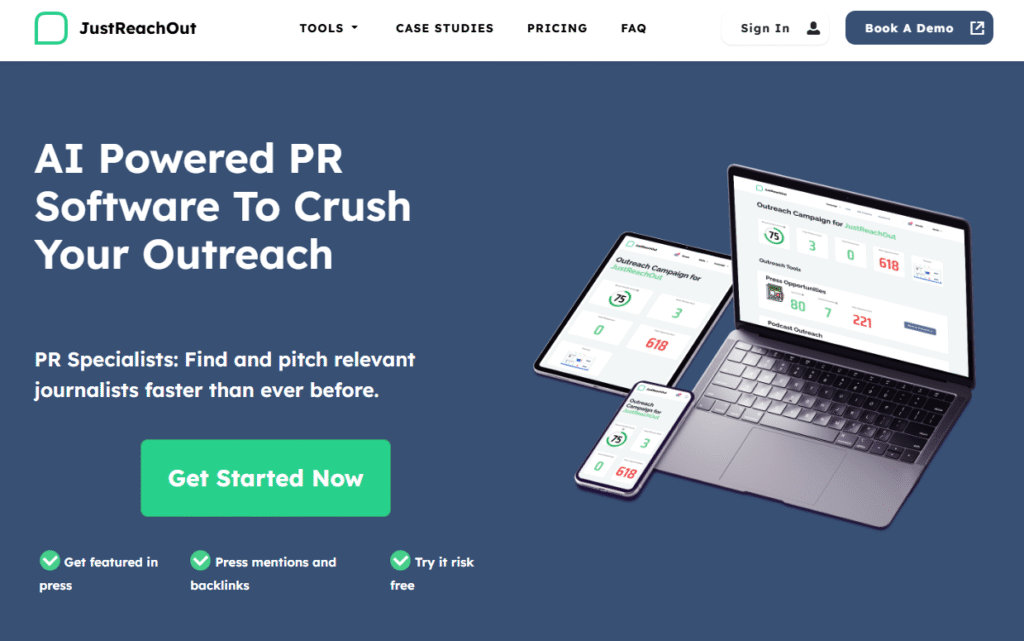
JustReachOut is a journalist database tool built for entrepreneurs, startups, and small businesses that want to take PR into their own hands without hiring expensive agencies. It goes beyond providing journalist contacts by offering training, templates, and PR strategy guidance.
Search and connect with journalists who cover your niche, then send personalized pitches directly through the platform.
Unlike most journalist databases, JustReachOut includes tutorials, pitch templates, and one-on-one coaching options to help users improve outreach skills.
The platform includes access to podcasters as well as journalists, allowing users to secure interviews and features on shows relevant to their industry.
JustReachOut helps businesses find opportunities to contribute quotes, guest posts, or features that not only earn PR coverage but also valuable backlinks for SEO.
Users can track who opened, responded, or engaged with pitches to refine their approach over time.
| Pros | Cons |
| Affordable compared to agencies | Database not as large as Cision |
| Includes PR coaching and templates | More DIY effort required |
| Access to podcasts as well as journalists | Fewer enterprise features |
| Great for startups and founders | Limited automation tools |
JustReachOut starts at $99/month, with higher tiers offering coaching and more advanced features. A free trial is available for new users.
Use the podcast outreach feature to secure interviews. Podcasts often have highly engaged niche audiences, making them a powerful PR channel for founders.
Instead of blasting generic pitches, use the platform’s templates to craft personalized outreach. Then test and refine your approach using the built-in coaching and campaign tracking.
Anewstip is a solid alternative if you want to search journalists based on their tweets and articles. While JustReachOut focuses on education and direct pitching, Anewstip shines at uncovering niche reporters by monitoring real-time content.
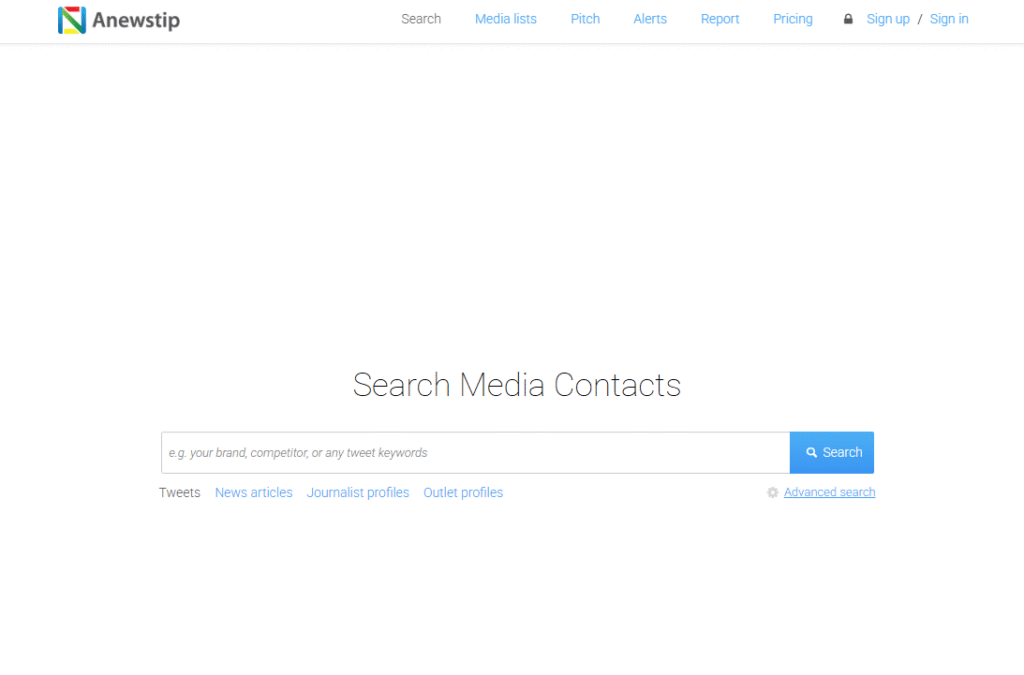
Anewstip is a powerful journalist database tool that focuses on real-time relevance. Instead of relying only on static contact lists, it helps you find journalists based on what they’re tweeting about or writing right now. This makes it a go-to platform for PR pros targeting niche industries or trending topics.
Anewstip lets you search for journalists by the content they’ve recently published or tweeted. This ensures your outreach is timely and highly relevant to what they’re currently covering.
In addition to real-time searches, Anewstip provides a journalist and outlet database so you can organize and save contacts for ongoing campaigns.
The platform doesn’t just track journalists—it also identifies influencers, giving you a dual approach to media and social outreach.
Send and track pitches directly inside the platform. Anewstip tracks opens and responses, so you know who’s engaging with your story.
Instead of being locked into large subscriptions, Anewstip offers flexible plans with credits for outreach, making it attractive for smaller teams.
| Pros | Cons |
| Real-time journalist discovery | Higher starting price ($200/mo) |
| Unique ability to search by tweets | Smaller database than Cision |
| Includes influencer data | Limited integrations |
| Flexible credit-based model | No newsroom or PR coaching |
Anewstip pricing starts at $200/month with flexible outreach credits. Custom plans are available for larger agencies.
Use the tweet search to spot journalists asking for sources. Responding quickly positions you as a go-to expert, often leading to instant coverage.
Start with keyword searches tied to your industry. For instance, if you’re in fintech, search for “blockchain regulation” and build a list of journalists currently covering it. Your pitch will feel far more timely than a generic outreach blast.
Muck Rack is a great alternative if you want real-time journalist profiles updated across multiple industries. Anewstip focuses on keyword-based discovery through tweets and articles, while Muck Rack takes a broader, profile-driven approach.
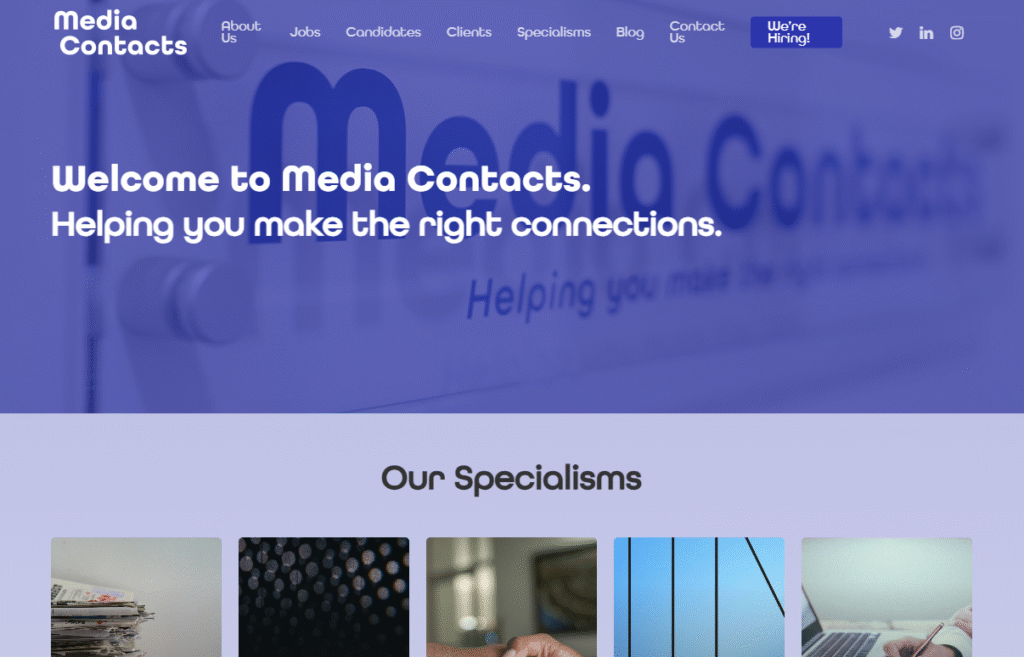
Media Contacts is a long-standing journalist database tool known for its emphasis on data accuracy. Unlike some platforms that rely on automated scraping, Media Contacts uses a team of researchers to manually verify journalist details. This makes it a trusted option for PR pros who prioritize reliability over flashy extras.
Every journalist contact is researched and verified by humans, reducing bounce rates and wasted outreach efforts.
Media Contacts organizes journalists by beat and industry, making it simple to target niche markets such as healthcare, finance, or lifestyle.
The platform allows agencies and teams to request customised lists based on campaign needs, giving users more flexibility.
Keep track of outreach, follow-ups, and journalist notes all in one place, similar to a lightweight PR CRM.
The team updates journalist information daily, ensuring your outreach campaigns aren’t derailed by outdated contacts.
| Pros | Cons |
| Human-verified journalist data | No transparent public pricing |
| Industry-specific segmentation | No free trial |
| Custom database building available | Smaller global scale than Cision |
| Strong reliability and accuracy | Fewer advanced automation tools |
Media Contacts works on a custom pricing model depending on your needs, industry, and scale. While not the cheapest, its accuracy saves money by reducing wasted campaigns.
Use the custom database service when launching a new product. Instead of sorting through irrelevant contacts, you’ll get a list built specifically for your industry and region.
If you’re preparing for a major announcement, request a customised journalist list from the Media Contacts research team. This gives you a handpicked outreach list that’s fresh and relevant.
Agility PR is a solid alternative if you need global coverage with multi-language support. Media Contacts excels at accuracy, while Agility PR shines at international scalability.
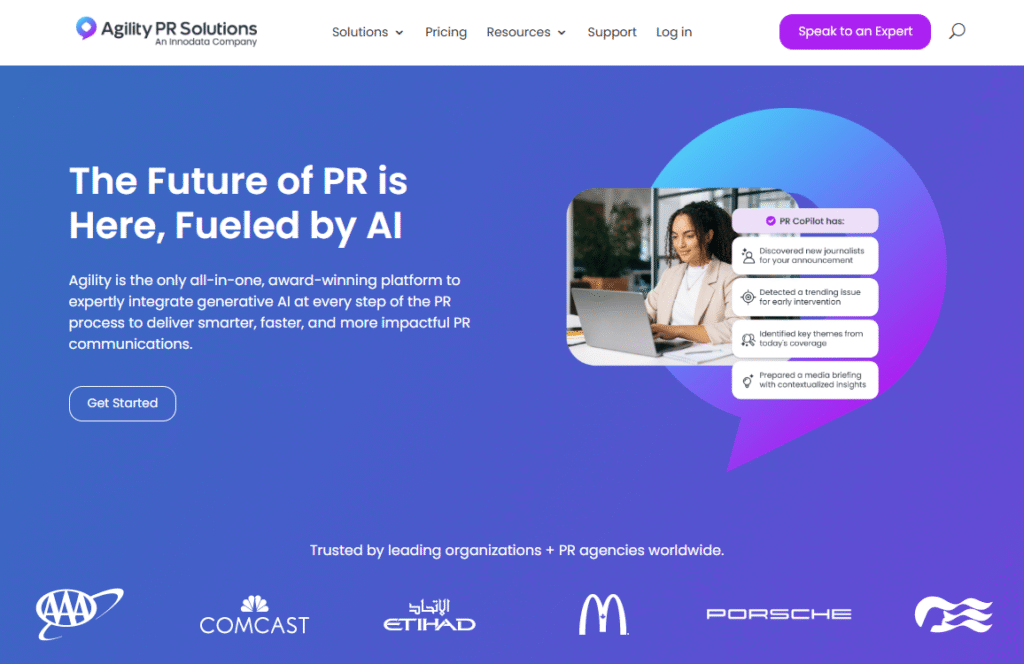
Agility PR is a journalist database tool built for brands and agencies managing international campaigns. Its strength lies in offering broad global coverage and multi-language support, making it particularly valuable for teams pitching across different regions.
Agility PR provides access to hundreds of thousands of journalists worldwide, segmented by country, beat, and outlet type.
One of its standout features is the ability to search and filter journalists in multiple languages, ensuring accurate targeting for non-English markets.
Send press releases directly through Agility PR’s distribution service to increase visibility with journalists and outlets.
Track your brand, competitors, and industry topics across digital, print, broadcast, and social media channels.
The platform allows you to build media lists, send targeted pitches, and track engagement in one workflow.
| Pros | Cons |
| Strong global and multilingual reach | Custom pricing only |
| All-in-one PR management system | Interface can feel complex |
| Integrated distribution and monitoring | No free trial |
| Good for large international teams | Database smaller than Cision’s |
Agility PR operates on a custom pricing model, usually negotiated with agencies and corporate clients depending on their global needs.
When targeting journalists in non-English markets, use Agility PR’s multi-language filters. Pitches land better when aligned with the local language and media culture.
If your company is launching in Europe and Asia simultaneously, you can segment lists by region, language, and beat. This ensures your press release distribution feels localized instead of one-size-fits-all.
Cision is the closest competitor with its massive global scale. However, Agility PR has an edge with its multi-language targeting, making it ideal for nuanced regional campaigns.
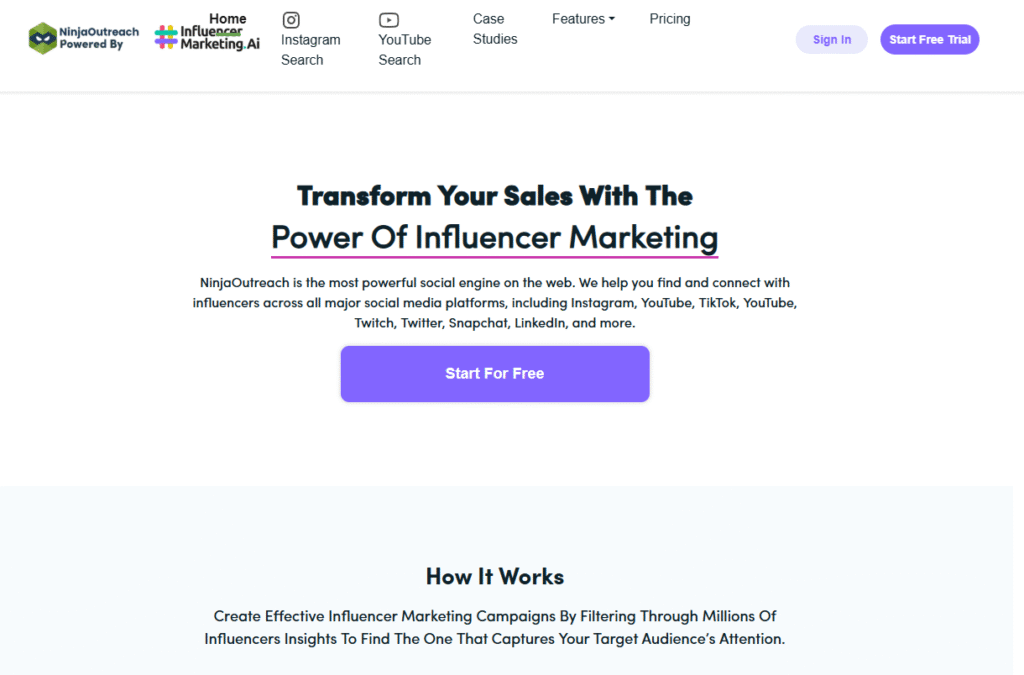
NinjaOutreach is more than just a journalist database tool—it’s a hybrid platform that combines influencer marketing with PR outreach. For businesses that want to connect with both journalists and social media personalities, NinjaOutreach provides a two-in-one solution.
Search millions of journalists, bloggers, and influencers by niche, platform, or location. This makes it easier to build a media list that covers both traditional press and digital voices.
NinjaOutreach includes built-in outreach automation so you can send bulk pitches, schedule follow-ups, and track replies without needing a separate email tool.
Beyond journalist outreach, the platform identifies guest post and backlink opportunities, making it useful for SEO-focused campaigns.
Tag, segment, and manage journalist and influencer relationships in one place. The tool allows teams to avoid duplicated outreach.
See a journalist’s or influencer’s social footprint to identify who has the most engagement in your target market.
| Pros | Cons |
| Combines PR and influencer outreach | Higher starting price ($389/mo) |
| Built-in email automation | More complex than simpler tools |
| Strong SEO and backlink features | Can be too broad for pure PR needs |
| Large database of contacts | Expensive for freelancers |
NinjaOutreach starts at $389/month, making it more expensive than tools like PressRush or JustReachOut. However, the wide scope of contacts (journalists + influencers) justifies the price for hybrid campaigns.
Use NinjaOutreach’s filters to identify journalists who also have strong social media influence. A single pitch could lead to both an article and a viral tweet.
If you’re launching a new product, you can pitch journalists for traditional coverage while simultaneously contacting influencers for social buzz—all inside one platform.
BuzzStream is a strong alternative if you want outreach automation but prefer a PR-specific tool. NinjaOutreach leans into influencer marketing, while BuzzStream focuses more on journalist relationship management.
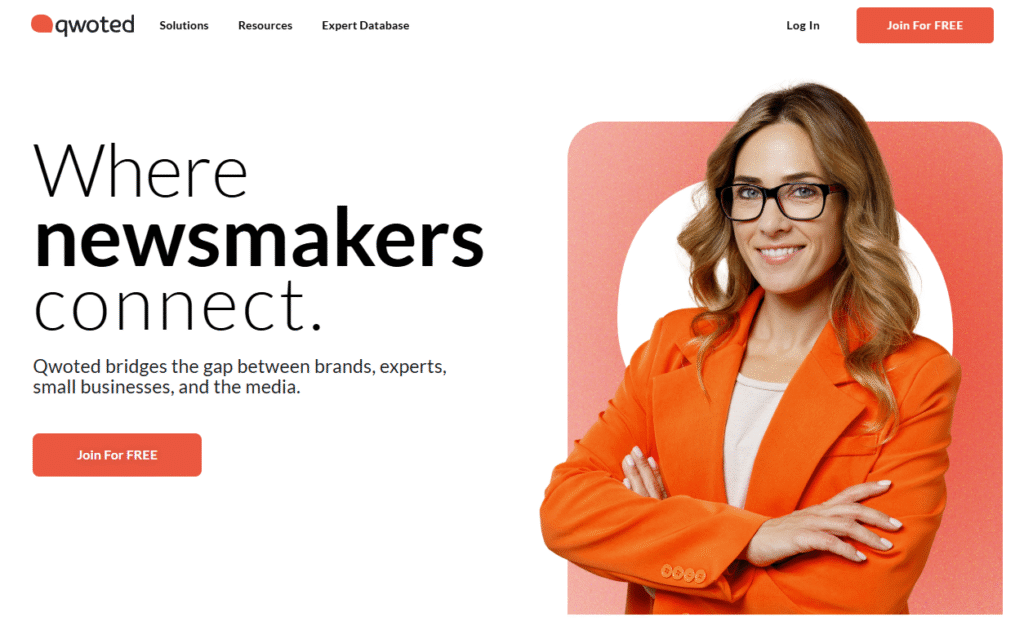
Qwoted is a journalist database tool that flips the traditional PR model on its head. Instead of you chasing journalists, Qwoted connects reporters with subject-matter experts. It’s designed for thought leaders, founders, and PR pros who want to get quoted in relevant media stories.
Qwoted acts as a matchmaking service where journalists post queries looking for expert sources, and PR pros or founders can respond directly.
Unlike many journalist database tools, Qwoted offers a robust free tier, making it highly attractive to startups and solo professionals.
Get notified when journalists are actively seeking commentary in your industry. This ensures your outreach is always timely.
Experts and brands can create detailed profiles showcasing their expertise, making it easier for journalists to vet and select credible sources.
Qwoted also allows you to build ongoing relationships with journalists who regularly seek quotes in your industry.
| Pros | Cons |
| Free plan available | Smaller journalist reach than Cision |
| Journalists come to you | Not ideal for large campaigns |
| Easy to use for founders and SMEs | Limited analytics |
| Strong for thought leadership | Less focus on press release distribution |
Qwoted offers a free plan with limited access. Paid plans start at around $149/month for expanded opportunities and outreach features.
Set up keyword alerts in your industry. Responding to a journalist request within the first hour often doubles your chance of being featured.
Instead of pitching cold, monitor journalist requests daily. When you see a query that matches your expertise, respond quickly with a concise, insightful answer.
HARO (Help A Reporter Out) is the closest alternative. While Qwoted is newer and more user-friendly, HARO has a longer track record and larger journalist participation.
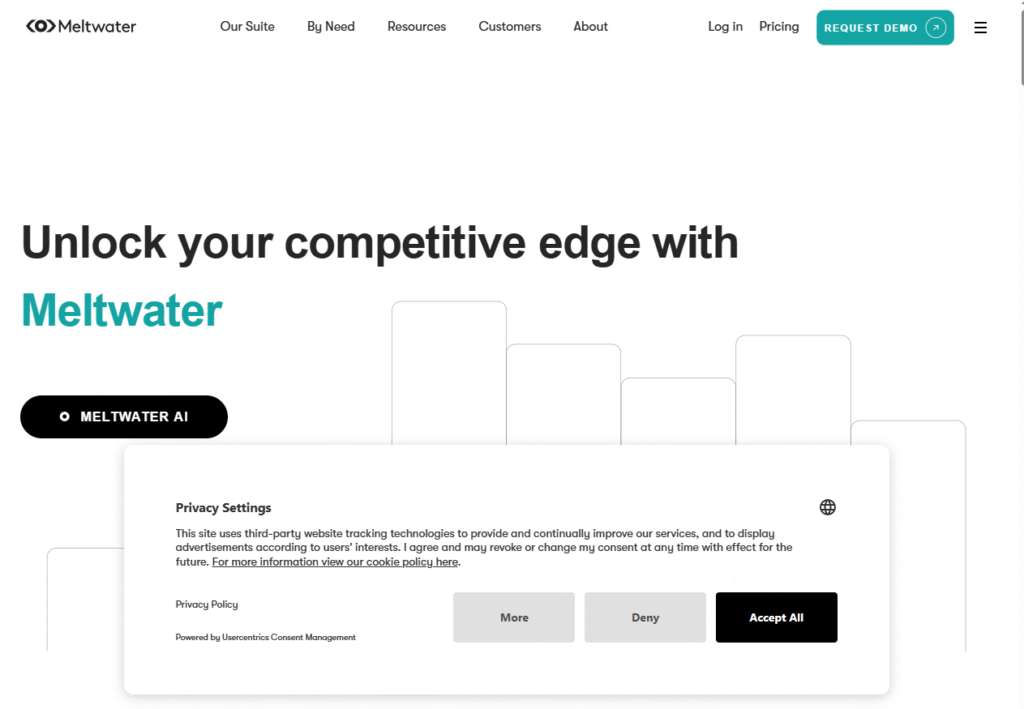
Meltwater is one of the most established journalist database tools with a strong focus on media monitoring. It’s designed for large brands, agencies, and global enterprises that need a single platform for discovering journalists, distributing content, and tracking coverage across multiple channels.
Meltwater tracks coverage across online news, broadcast, print, and social platforms. It’s particularly strong for enterprises that need to understand their global brand reputation in real time.
Access a large database of verified journalist contacts with filters for industry, location, and beat. This helps PR teams build targeted outreach lists.
Send announcements through Meltwater’s built-in distribution system to ensure your stories land directly in the hands of relevant journalists.
Beyond traditional PR, Meltwater offers powerful social listening tools to monitor trends, influencer conversations, and competitor mentions.
Get advanced reports that measure media reach, sentiment, and ROI, making it easier to justify PR spend to executives.
| Pros | Cons |
| All-in-one PR and monitoring suite | No free trial available |
| Strong analytics and reporting | Custom pricing only |
| Large journalist database | Can be overwhelming for smaller teams |
| Trusted by global enterprises | Higher learning curve |
Meltwater pricing is custom quote only, typically at enterprise-level budgets. While expensive, it delivers value through its broad feature set.
Use Meltwater’s social listening to spot emerging journalists covering your niche on platforms like X (Twitter) and LinkedIn. This lets you connect with them before competitors do.
Pair journalist outreach with Meltwater’s monitoring tools. For example, if your competitor gets press coverage, you can track the journalist and pitch them a stronger, alternative angle for your brand.
Cision is a natural competitor. Both offer massive journalist databases and distribution, but Meltwater excels in real-time social listening, while Cision leans on its global media scale.
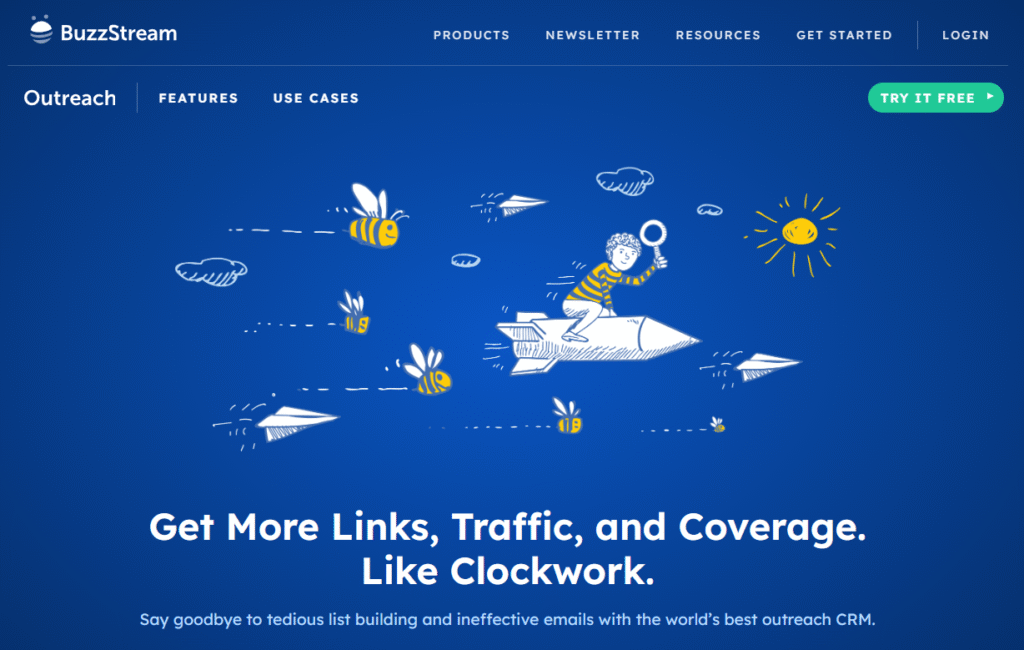
BuzzStream is a journalist database tool customised for PR and SEO teams that want to streamline outreach and track relationships. It’s particularly popular among digital marketers because it blends traditional media outreach with link-building and blogger outreach.
BuzzStream helps you find journalist emails and manage them in a CRM-like system, making it easy to organize large outreach campaigns.
Automate email sequences, schedule follow-ups, and personalize at scale. This saves time without losing the human touch.
In addition to journalist outreach, BuzzStream identifies backlink opportunities from bloggers and niche sites, aligning PR with SEO goals.
Agencies and teams can assign tasks, share notes, and avoid duplicated outreach. Everything is logged so no journalist gets pitched twice.
Track open rates, reply rates, and campaign performance. BuzzStream provides clear insights to optimize outreach over time.
| Pros | Cons |
| Great for PR + SEO teams | Smaller journalist database than Cision |
| Strong outreach automation | Interface can be complex for new users |
| CRM-style contact management | No built-in press release distribution |
| Affordable compared to enterprise tools | Limited media monitoring |
BuzzStream starts at $24/month, making it one of the most affordable journalist outreach tools on this list. Pricing scales with database size and team features.
Use BuzzStream’s tagging system to categorize journalists by interest. This ensures every pitch is targeted and context-specific, not a generic blast.
Build a segmented media list, create automated but personalized email sequences, and track results inside the dashboard. Over time, refine your pitches based on open and reply rates.
NinjaOutreach is a good alternative if you want a mix of influencer and journalist data. BuzzStream is more PR-focused with stronger CRM features, while NinjaOutreach leans toward influencer campaigns.
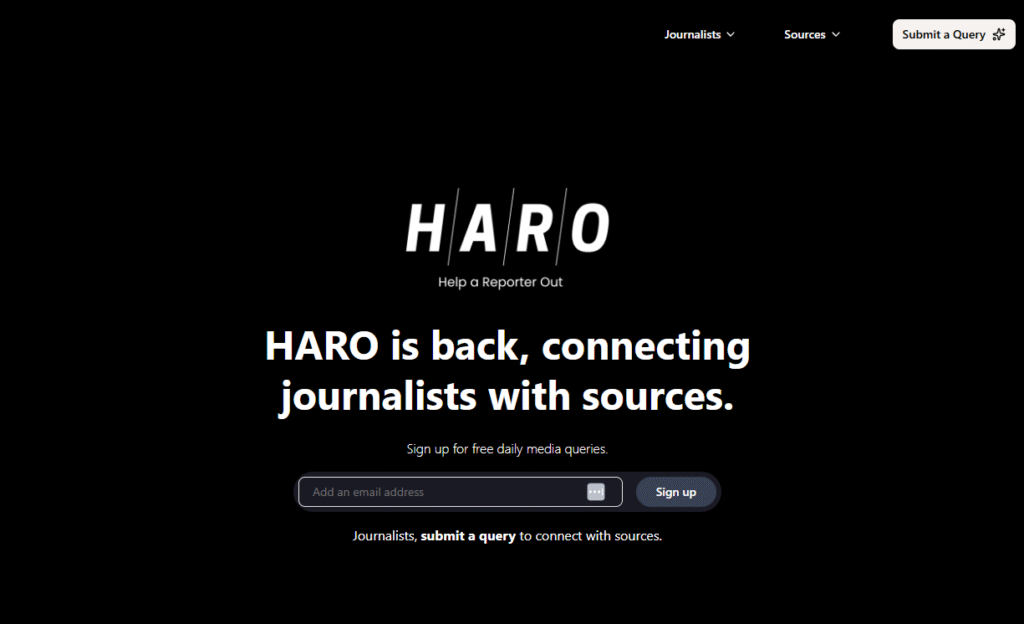
HARO is one of the most well-known journalist database tools, but it works differently than traditional platforms. Instead of searching for journalists, you receive daily emails with queries from reporters actively looking for expert sources. This makes it ideal for startups, founders, and thought leaders who want quick media wins.
Subscribers receive three daily emails filled with journalist requests across industries. If your expertise matches, you can respond directly.
Journalists from outlets like The New York Times, Reuters, and Forbes regularly use HARO to find sources, giving you access to top-tier publications.
The free version gives access to daily queries, while paid plans unlock keyword alerts, faster delivery, and more advanced filtering.
Paid tiers allow you to filter by industry keywords so you only receive relevant requests.
Responding to HARO queries can lead to backlinks, brand mentions, and high-authority media coverage.
| Pros | Cons |
| Free plan available | Very competitive — many responses |
| Direct access to top-tier journalists | No traditional journalist search |
| Great for thought leadership | Requires fast responses |
| Potential for backlinks & SEO | Limited control over outreach |
HARO has a free tier, while paid plans start at $19/month and go up to $149/month for premium features like keyword filtering and priority alerts.
Respond to HARO queries within the first 1–2 hours. Journalists often get flooded with responses, and early replies are more likely to be noticed.
Instead of sending cold pitches, scan daily queries and craft concise responses that highlight your expertise. Over time, even one HARO placement can bring huge credibility to your brand.
Qwoted is a newer alternative with a more user-friendly interface and networking features. While HARO relies on email lists, Qwoted offers an interactive journalist–expert matchmaking platform.
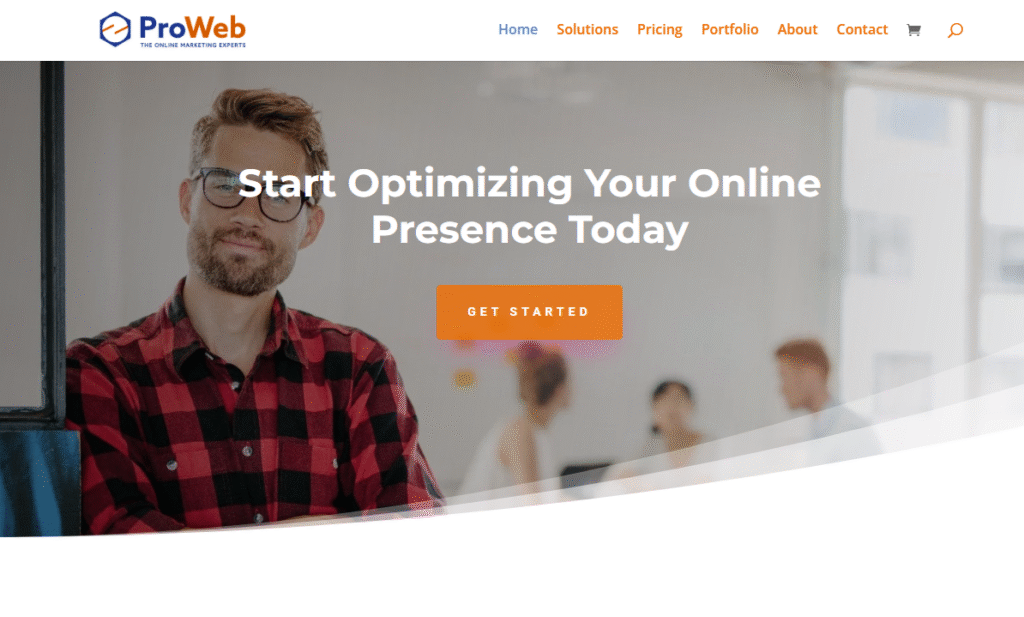
Proweb is a journalist database tool focused on European markets, making it a strong choice for companies running PR campaigns across the EU. It emphasizes regional accuracy, offering verified journalist contacts and localized coverage for businesses looking to expand outside the US or UK.
Proweb provides deep access to European journalists and outlets, including national newspapers, trade publications, and niche industry media.
The platform manually verifies journalist details to reduce bounce rates and improve campaign success.
Filter journalists by country, beat, and outlet type to ensure your outreach is aligned with local media landscapes.
Distribute press releases directly to European media outlets, helping brands gain regional coverage.
Track brand mentions across EU publications to measure campaign effectiveness.
| Pros | Cons |
| Strong coverage in European markets | Limited reach outside the EU |
| Verified journalist contacts | No transparent public pricing |
| Good for localized campaigns | Fewer advanced AI features |
| Includes media monitoring | Less known than global tools |
Proweb works on a custom pricing model, with rates depending on the size of access and level of features required.
Use Proweb’s regional segmentation to build separate journalist lists for each EU country. A German journalist expects different angles than a French or Spanish reporter—localized pitching makes all the difference.
If you’re launching in several EU markets, segment journalist lists by language and country, then customise pitches to fit cultural and media nuances.
Agility PR is a suitable alternative if you need broader global coverage with multi-language support. Proweb is best when your focus is specifically Europe, while Agility works better for worldwide campaigns.
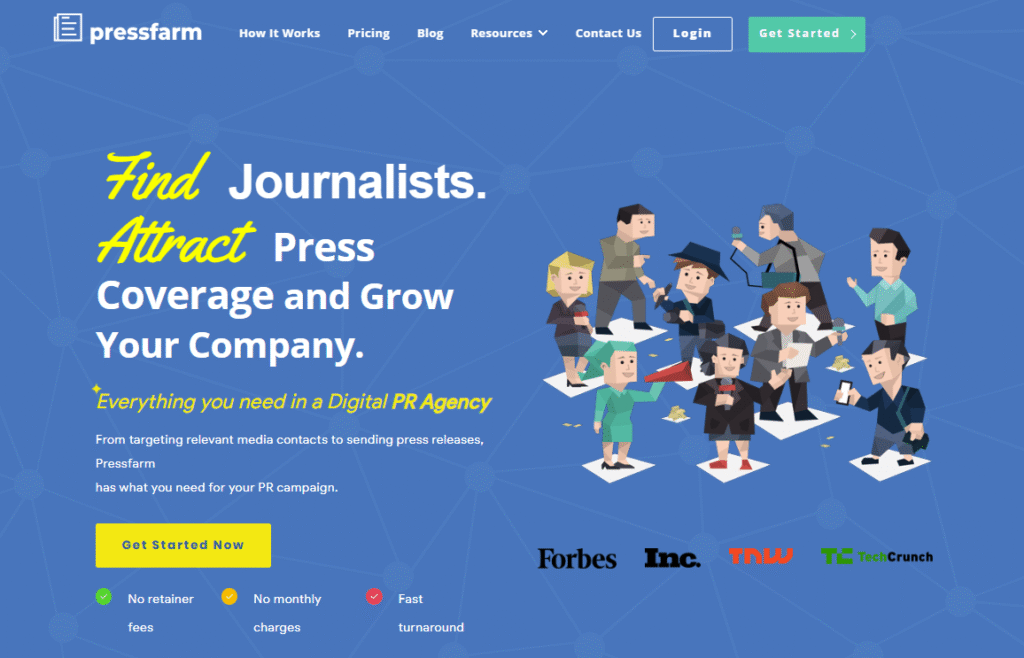
Pressfarm is a journalist database tool designed specifically for startups and small businesses that need affordable PR support. Instead of leaving founders to figure out outreach themselves, Pressfarm provides curated journalist lists and press kits customised to each client’s industry.
Pressfarm builds customized media lists based on your startup’s niche, saving time compared to DIY research.
The platform helps create professional press kits, including logos, bios, and company details, so journalists have everything they need to cover your story.
In addition to curated lists, users can access Pressfarm’s larger database of journalists and outlets.
Pressfarm also offers add-on services like writing press releases and media pitches, which is especially helpful for early-stage founders without PR experience.
Plans are priced with startups in mind, offering entry-level packages that provide immediate media outreach help.
| Pros | Cons |
| Affordable startup-friendly pricing | Smaller database than enterprise tools |
| Curated, niche-specific media lists | Limited automation features |
| Includes press kit creation | May not suit large PR agencies |
| Add-on writing services available | No advanced analytics |
Pressfarm plans start at $90/month, with higher tiers offering larger journalist lists and more services.
Use the curated journalist list as your foundation, but don’t stop there—combine it with Pressfarm’s larger database to expand outreach for bigger campaigns.
Start with a curated journalist list from Pressfarm, then send pitches supported by your branded press kit. Journalists are more likely to cover a story when you make their job easier.
JournoLink is a good alternative if you’re a UK-based SME. Pressfarm is global and startup-focused, while JournoLink specializes in affordable UK outreach.
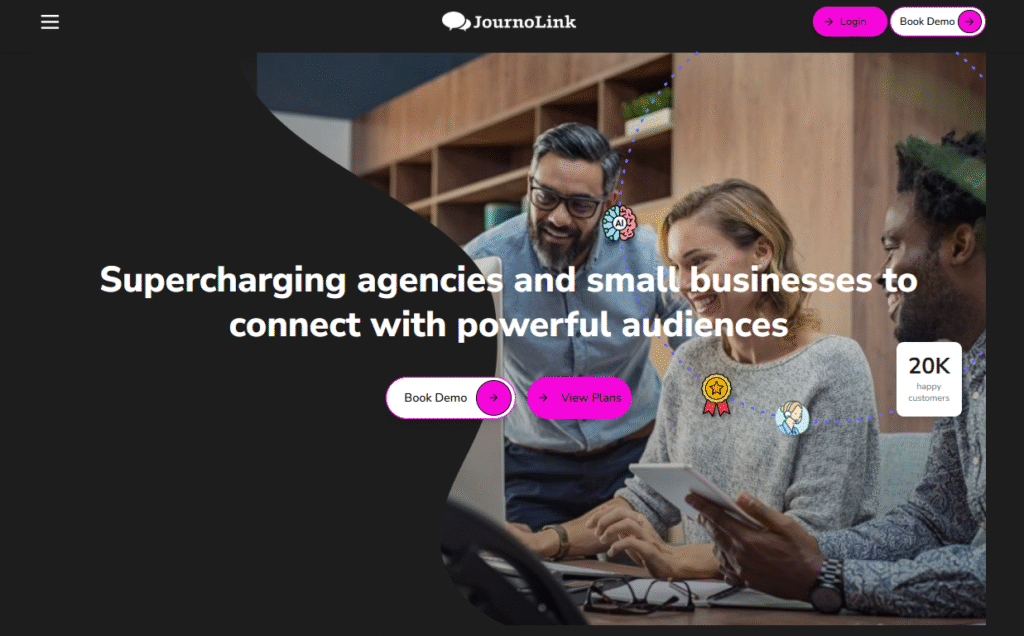
JournoLink is an affordable journalist database tool built for small and medium-sized enterprises (SMEs) in the UK. It combines access to journalists with press release distribution and media monitoring, making it a budget-friendly option for local businesses.
JournoLink offers access to UK journalists segmented by beat and outlet, allowing small businesses to connect with reporters covering their industry.
The platform distributes press releases directly to relevant media contacts, saving SMEs the hassle of manual outreach.
JournoLink provides a calendar of upcoming awareness days and seasonal events, helping businesses time their campaigns for better relevance.
Track mentions of your brand in UK publications and online outlets to measure PR impact.
With low-cost subscriptions, JournoLink makes PR accessible to businesses with limited budgets.
| Pros | Cons |
| Affordable for small businesses | Limited to UK market |
| Press release distribution included | Smaller database than Cision or Muck Rack |
| Easy-to-use platform | Few advanced analytics tools |
| Seasonal PR calendar is helpful | No global outreach capabilities |
JournoLink plans start at £39/month, making it one of the most cost-effective journalist database tools available.
Use JournoLink’s PR calendar to plan your outreach around awareness days. Journalists often need stories tied to these events, giving your pitch a better chance of coverage.
Schedule your press releases to coincide with seasonal dates in the PR calendar, then distribute directly via JournoLink to maximize coverage potential.
Pressfarm is a stronger choice for startups outside the UK. JournoLink shines for UK-based SMEs, while Pressfarm caters to early-stage global startups.
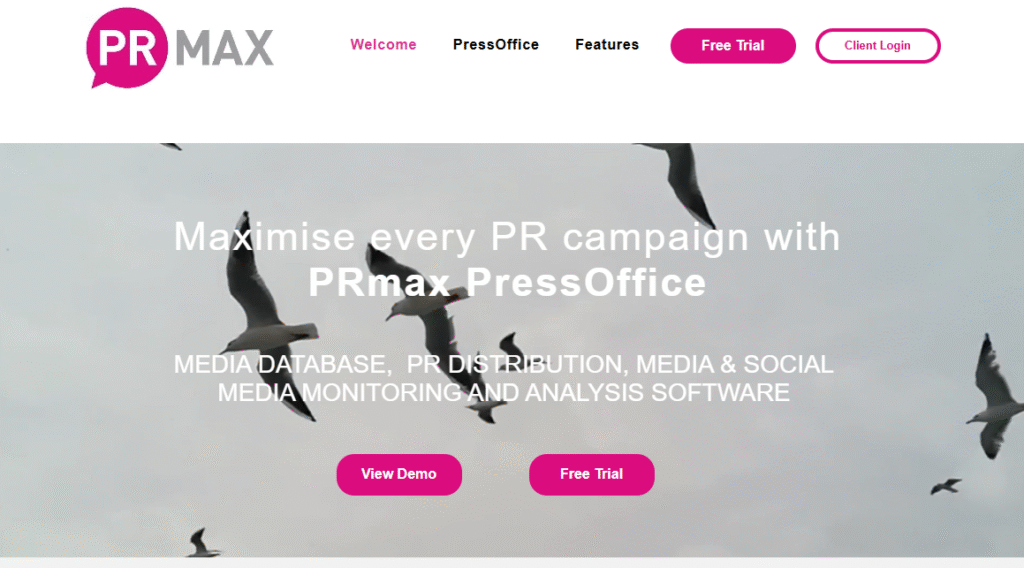
PRmax is a versatile journalist database tool designed for agencies and PR teams that need more than just contact lists. It combines media outreach with campaign analytics, helping professionals not only connect with journalists but also measure the results of their PR efforts.
PRmax provides access to thousands of journalist contacts, segmented by industry, publication, and geography.
Send press releases directly from the platform to journalists and outlets, ensuring your announcements reach the right audience.
Unlike many tools, PRmax tracks coverage, engagement, and ROI. This makes it easier to report results back to clients or executives.
Monitor brand mentions and competitor activity across print, online, and broadcast channels.
Features like multi-client campaign tracking make PRmax particularly useful for agencies managing several accounts.
| Pros | Cons |
| Combines outreach and analytics | No transparent pricing |
| Strong agency features | Smaller database than global leaders |
| Built-in media monitoring | No free trial available |
| Campaign ROI tracking | Can feel complex for beginners |
PRmax uses a custom pricing model based on database size and features. It’s typically aimed at agencies and mid-to-large businesses.
Use PRmax’s analytics to demonstrate ROI to stakeholders. Showing how outreach directly drives media coverage strengthens the value of your PR efforts.
After distributing a press release, use PRmax’s monitoring to see where it gets picked up. Then, measure engagement and sentiment to refine future outreach.
Meltwater is a close alternative if you want broader monitoring and social listening. PRmax is better suited for agencies that prioritize campaign ROI tracking.
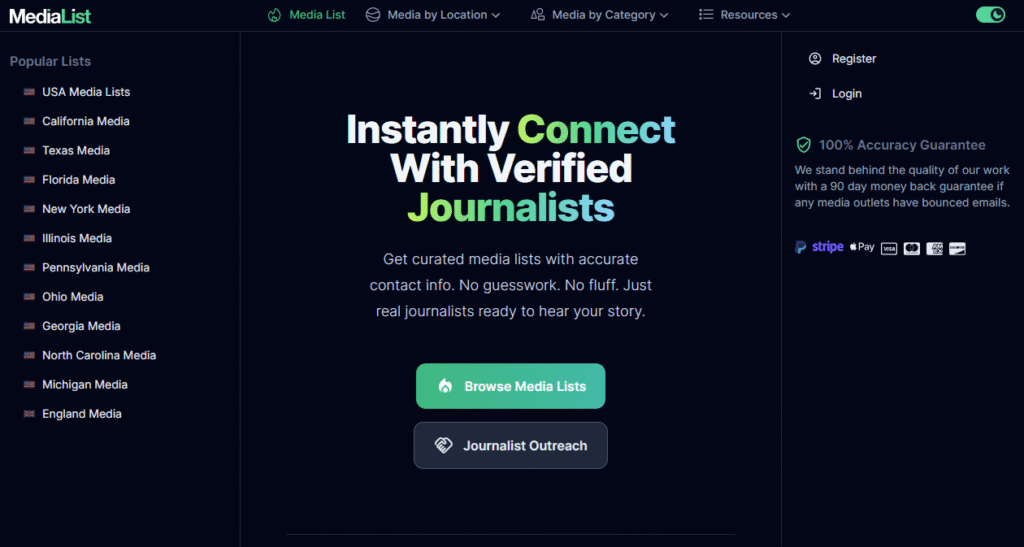
MediaContacts.co is a budget-friendly journalist database tool designed for freelancers, startups, and small PR teams. Unlike enterprise platforms, it focuses on affordability and ease of use, making it accessible to professionals who need media lists without high overhead costs.
Access curated journalist lists at a fraction of the cost of enterprise solutions. Perfect for small-scale PR campaigns.
Download media lists instantly without going through long onboarding or sales calls.
Search journalists by beat, outlet, or location to create targeted lists for your campaigns.
In addition to monthly plans, MediaContacts.co offers one-off purchases of media lists, which is ideal for freelancers or occasional PR needs.
The platform strips away complex features, focusing on delivering accurate journalist contacts quickly.
| Pros | Cons |
| Very affordable plans | Smaller database than top tools |
| Instant access to journalist lists | Fewer advanced features |
| Pay-as-you-go flexibility | No media monitoring |
| Easy for freelancers and small teams | Limited integrations |
MediaContacts.co plans start at $49/month, with options for one-off purchases of media lists at similar low-cost rates.
Use MediaContacts.co for short-term campaigns like a product launch or event. Pay-as-you-go lists keep costs low while still giving you targeted outreach.
Purchase a media list customised to your industry, then run a focused PR campaign. Since the tool is affordable, you can reinvest savings into follow-up outreach or ad amplification.
PressRush is a solid alternative if you want more pitch tracking features. MediaContacts.co wins on affordability and instant access, while PressRush offers more automation.
Each of these journalist database tools was chosen because it solves a specific PR challenge—from global media monitoring with Cision and Meltwater, to budget-friendly list-building with PressRush and MediaContacts.co. Whether you’re a freelancer, startup, or multinational enterprise, there’s a solution customised to your outreach needs.
The key takeaway: having the right journalist database tool saves time, increases pitch success rates, and strengthens long-term media relationships. Instead of guessing who to contact, you’ll always know the right journalist, at the right time, with the right story.
At Pearl Lemon PR, we understand that tools alone don’t guarantee results—it’s how you use them that matters. Our team specializes in leveraging platforms like Muck Rack, Cision, and BuzzStream to secure high-impact coverage for our clients.
Whether you’re a startup trying to land your first TechCrunch feature, an SME aiming for consistent press in trade outlets, or an enterprise managing global campaigns, we customise outreach strategies that get you noticed. From building targeted journalist lists to crafting pitches that resonate, our approach is built on precision and relationships.
If you’re ready to stop guessing and start landing consistent media coverage, Pearl Lemon PR can guide you every step of the way.
1. How does Pearl Lemon PR use journalist database tools?
We combine leading journalist database tools like Muck Rack, Cision, and BuzzStream with our in-house expertise to target the right reporters. Instead of sending generic pitches, we personalize outreach based on journalist interests and coverage history.
2. Can Pearl Lemon PR build a custom journalist list for my industry?
Yes. We create customised journalist lists based on your industry, geography, and target publications. This ensures your story reaches journalists most likely to cover it.
3. Do you only use databases, or do you have direct media relationships?
We use journalist databases as a foundation, but our real strength is in the relationships we’ve built with reporters and editors across industries. This combination ensures stronger results.
4. How do you measure PR success?
We track metrics such as media placements, publication reach, backlinks earned, and audience engagement. Using tools like Meltwater and PRmax, we provide transparent reporting on campaign performance.
5. Can Pearl Lemon PR secure international media coverage?
Yes. Using tools like Agility PR and Cision, we run campaigns across North America, Europe, and Asia. We also localize pitches to suit cultural and media differences.
6. Do you help startups and SMEs, or only large enterprises?
We work with clients of all sizes. For startups and SMEs, we use affordable journalist database tools like Pressfarm, JustReachOut, and JournoLink to deliver targeted PR at lower costs.
7. Can you guarantee press coverage?
No ethical PR agency can guarantee coverage. What we guarantee is that your story will reach the right journalists with compelling pitches that maximize your chances of being featured.
8. What industries does Pearl Lemon PR specialize in?
We have experience across tech, finance, healthcare, eCommerce, and lifestyle sectors. By combining niche journalist databases with our expertise, we adapt PR campaigns to any industry.
9. Do you also help with press release writing and distribution?
Yes. We write professional press releases and distribute them through tools like PRmax, Prowly, and Cision to ensure maximum exposure.
10. Why should I hire Pearl Lemon PR instead of managing outreach myself?
Tools give you data, but they don’t build relationships or craft winning pitches. Our team pairs technology with strategy, creativity, and connections to consistently land impactful media coverage.

Your brand is your story, and we make sure the world hears it. Don’t wait—book your PR consultation now and begin building your brand’s presence.